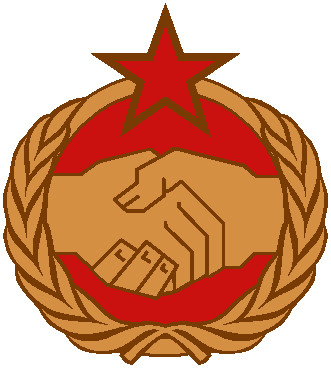Quoting the 1982 report, featured in page 431 of this book:
In 1981, grain imports and other agricultural products reached almost $12 billion, or about 40% of the U.S.S.R.’s total hard currency purchases. Despite the large‐scale expansion in agricultural imports though, the Soviet Union remains basically self‐sufficient with respect to food. These imports are intended primarily to prevent a decline in meat consumption and are not essential to maintaining an adequate quantity of food consumption.
At 3,300 calories, average daily food intake equals that in developed Western countries. Grain production is more than sufficient to meet consumer demand for bread and other cereal products. To summarize, when we say that the U.S.S.R. is self‐sufficient, we do not mean that the Soviets neither need nor benefit from trade. Imports, particularly from the West, can play an important rôle in relieving critical deficiencies, spurring technologic progress, and generally improving Soviet economic performance.
What we mean is that the Soviet economy’s ability to remain viable in the absence of imports is much greater than that of most, possibly all, other industrialized economies. Consequently the susceptibility of the Soviet Union to economic leverage tends to be limited.
(Emphasis added.)
Imports were essentially supplementary; demanded more so for optimization than for emergencies. Nonetheless, it raises the question: why have food imports at all?
The agency glosses over this issue with the excuse that central planning and administration by fiat apply poorly to agriculture. However, there is one factor that they don’t discuss: the environment. Quoting Soviet Agriculture, pages 18–19:
The natural and climatic conditions of the U.S.S.R.’s agriculture are both severe and unstable. No other major country faces such serious problems in overcoming their negative influence on agricultural production. Agroclimatologists estimate that on the average these conditions are 2–2.5 times worse than in the U.S.A. […] Generally over 60% of the country’s territory is periodically subjected to droughts and other unfavourable weather influences.
At the same time that zone normally accounts for approximately 75% of grain deliveries. The year 1972 for example featured a snowless winter that destroyed the crops of 12 million hectares of sown land, then drought affected more than 100 million hectares of arable land. This is a very large area; almost twice the size of France.
[…]
The drought in 1975 however was even more severe. In fact, Soviet farmers had never yet experienced such unfavourable conditions. More generally the frequency of droughts between 1963 and 1975 is matched only by that of the 1890s (when a series of harvest failures shook Russia).
However (quoting pages 19–20):
The country’s average yield per hectare of land was 8.3 centners in 1963, 9.5 centners in 1965, 12.1 centners in 1967, 14 centners in 1972, and 13.8 centners in 1975. The gross grain harvests in the corresponding years were 107.5 million tons, 121.1 million tons, 147.9 million tons, 168.2 million tons, and 140 million tons [a drought year, remember] respectively.
[…]
In a sense, difficult years were a sort of test for our social system’s foundations, but they only show that the Soviet path of agricultural development and the agrarian policy […] which serves the needs of a comprehensive consolidation of collective and state farms, have been bearing fruit. In the U.S.S.R. the socio‐economic conditions governing the agricultural development are gradually reducing its dependence on spontaneous fluctuations in the weather as well as the work conditions’ harshness on the land.

